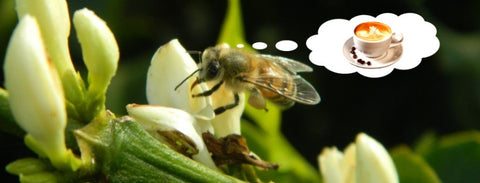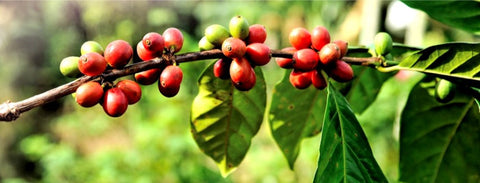We are not the only creatures who crave the bean, or rather its nectar. Insects native to the regions where coffee plants occur naturally, or where controlled cultivation is well established, also look for their coffee fix each day. Bees are among the most remarkable buzz seekers.
The evolution of coffee occurs at two levels: first in nature and second through human consumption and ingenuity. The coffee genome is a complex topic we could not begin to express here without a string of multi-syllable words as impossible to pronounce as a strand of DNA is impossible to observe with the naked eye.
Suffice it to say that according to scientists, the coffee plant has evolved quite independently from human assistance and it has done so to supply a boost of energy to its own success and survival. To this end, it has gradually modified the compounds that alter the behavior of their most ardent pollinators; chief among them, caffeine.
How this works is complex and utterly ingenious. Makes one wonder how much more there is to plant life that we do not suspect or understand. Indeed, scientists have observed that the geo-localization and olfactory memory abilities of bees exposed to caffeine compounds are superior to those of bees exposed to sucrose only. This enhances their overall foraging success and in turn serves the coffee plants by improving the odds of being visited by the yellow, happily buzzing pollinator. Truly a win-win situation.
Coffee plant brews caffeine compounds, bee responds to the fresh, percolating brew (so to speak), traps and transports pollen in the process. Bee goes home. Wakes up craving the caffeine bliss du jour. Stops at the nearest plant on the way to work. Sounds familiar?
But this is not all. While caffeine attracts pollinators such as the bee, and it also protects the plants from undesirable creepy-crawlies and vegetation. For instance, the caffeine present in dead coffee shrub leaves released to the ground contaminates the soil making it inhospitable to competing plant species. And the caffeine within the flesh of the plant (stem, leaves, roots and all) serves as protection from offensive insects for whom caffeine in high doses is utterly toxic.
Next spring, when you hear a bee buzzing by, raise your cup and say, “Any creature that loves coffee is certainly a friend to me!”





Comments (0)
There are no comments for this article. Be the first one to leave a message!